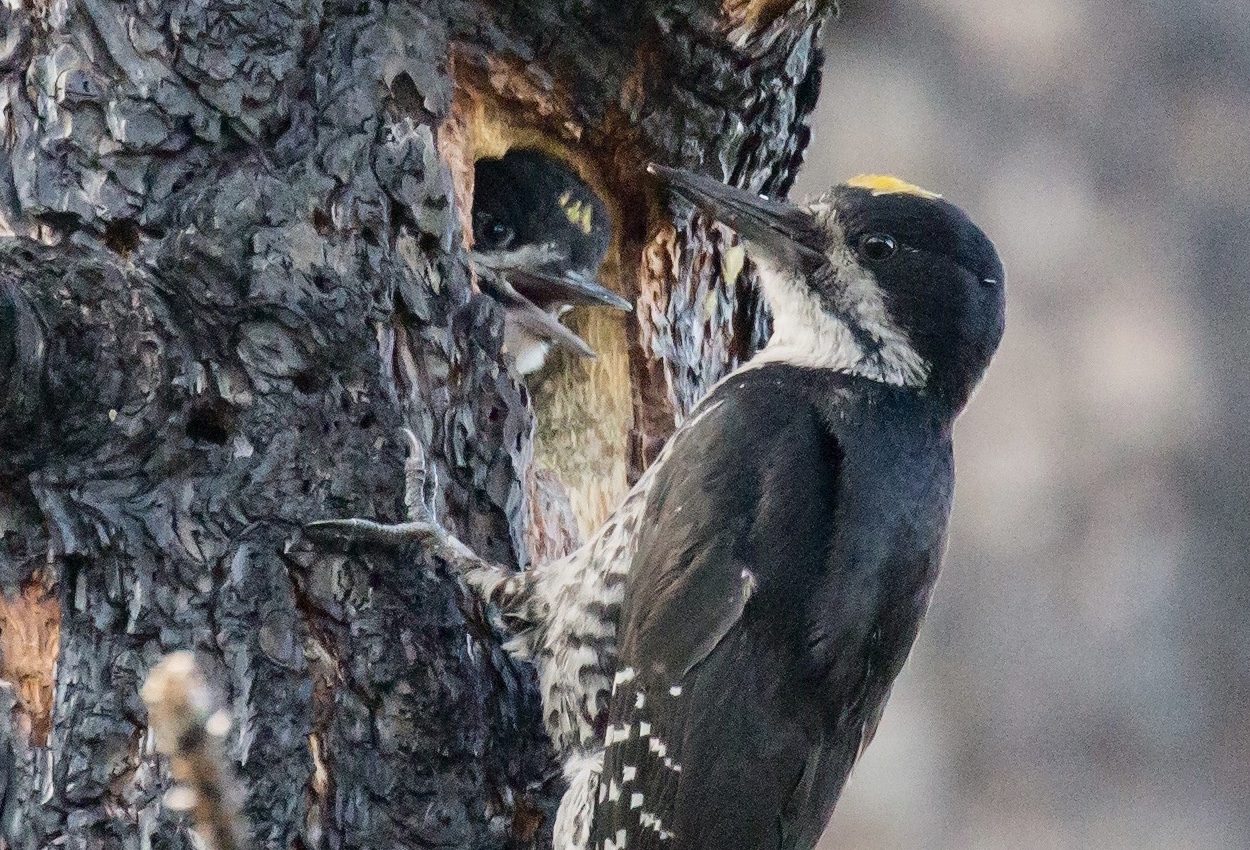
Forest fires are becoming too intense for birds
Forest fires are becoming too intense for birds that normally depend on them. Fires are a necessary part of the forest ecosystem that help clean up the landscape and increase the level of nutrients and organic matter in the soil. For some species of animals, such as the Black-backed Woodpecker, forest fires also create ideal habitats.
But now, a new study has found that mega-fires across the western United States may be threatening these fire-loving woodpeckers. The researchers found that as the fires become bigger and more intense, the birds are struggling to find the edges of burned patches where they prefer to settle.
Collaborating with experts from The Institute for Bird Populations and the U.S. Forest Service, PhD candidate
Andrew Stillman investigated the nest site selection and nesting success of Black-backed Woodpeckers in burned forests of northern California. For eight years, the researchers monitored more than 100 nests while measuring nest site characteristics. Forest fires are becoming too intense for birds that normally depend on them
The birds were found to strongly prefer nesting in severely burned stands that had lots of dead trees. The birds placed their nests near the edges of these burned patches, typically within 500 meters of a patch with live trees.
“We didn’t expect to find these woodpeckers nesting so close to edges,” said Stillman. This is because previous research has shown that woodpecker nests closer to living forest patches are at a much higher risk of being raided by squirrels and other predators.
A separate study found that the baby birds quickly move to living patches with good cover after leaving the nest, suggesting that the adults are providing their offspring with easy access to the live forest.
Stillman explained that “pyrodiversity,” which is the diversity found in the age, size, and severity of burned patches, appears to be important for the woodpecker because it provides more edges between different burn severities. As a result of climate change, however, fires are growing larger with reduced pyrodiversity.
“The thing about pyrodiversity is that we expect it to decrease,” said study co-author Dr. Morgan Tingley. “Every year we see more ‘mega-fires,’ and these fires are quite homogenous in their structure, leading to low pyrodiversity. So even though the future is expected to hold more fire in western forests, the outlook may not even be good for fire-loving species.”
“We hope that these results provide some of the missing information necessary to balance post-fire logging activities with the habitat needs of woodpeckers,” said Stillman.
The study is published in the journal The Condor: Ornithological Applications.
—
By Chrissy Sexton, Earth.com Staff Writer
Image Credit: Jean Hall












